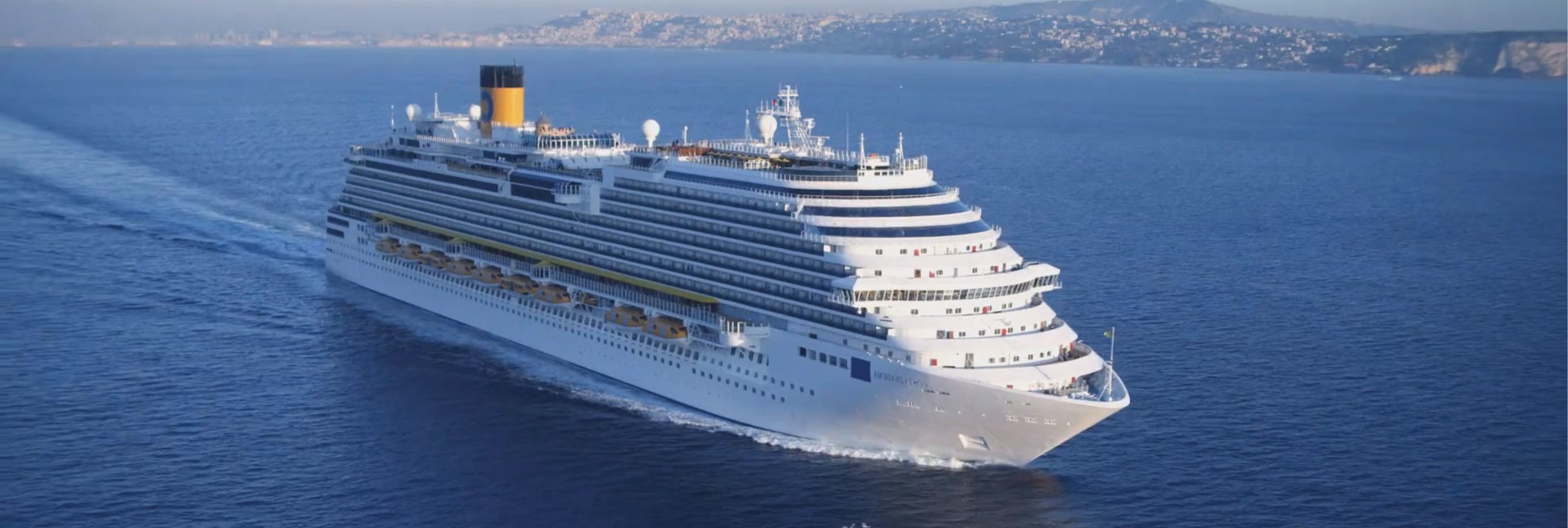After a 2020, where the cruise industry almost came to a halt, and a 2021 full of uncertainties for the future, cruise lines are quickly bouncing back.
In its 2022 State of The Cruise Industry Outlook, CLIA estimates that in July almost 60% of ships will go back to sea, filled at nearly 100% capacity. Passenger volume (which went down by 81% in 2020) is expected to exceed pre-pandemic levels by the end of 2023 or – at the latest - by 2024.
Pent-up demand has a lot to do with such a stunning recovery pace, but it’s not just that. Travellers have indeed a high level of trust in cruise lines. CLIA's 2022 Outlook report includes survey data collected during the pandemic showing that nearly 80% of those who went on a cruise at least once would go back again. This percentage is the same as before the pandemic, proving that the industry’s strategy dubbed responsible cruise tourism is paying off.
Health and sustainability go hand in hand
The responsible cruise tourism strategy combines science-backed health protocols onboard with aggressive sustainability goals. The two are strictly connected. The global pandemic made us more aware of the importance of taking care of our own health and the health of the planet, including when we’re on holidays. According to a survey with 29,000 travellers published by booking.com in 2021, 83% of respondents believe that sustainable travel is vital, with 61% saying that the pandemic has made them want to travel more sustainably.
The cruise industry followed suit. In November 2021, CLIA committed to becoming carbon neutral by 2050. With this goal in mind, cruise lines are focusing their investments and initiatives into reducing air emissions, switching to cleaner fuels, and improving energy efficiency.
An aspect not to underestimate, however, is the impact of food waste reduction.
Managing food waste on cruise ships
Food waste on cruise ships is almost always seen as a storage and recycling issue.
Cruise lines have different ways to store food waste. They can keep it as it is, reduce it to minute particles with grinders, liquefy it with biodigesters that use microorganisms instead of chemicals (Carnival recently installed them on its entire fleet), or use more advanced technologies like Royal Caribbean’s Hydrothermal Oxidation.
From there, the most straightforward way to dispose of it is to discharge it at sea. Although MARPOL Annex V allows this practice under specific conditions, it’s not the most environmentally friendly. While it’s true that food waste is completely biodegradable, it can still contain insecticides, hormones and antibiotics that pollute the sea. What’s more, food nutrients such as nitrogen and phosphorus can contribute to unwanted algal blooms, through a process known as eutrophication.
Alternatively, food waste can be kept in storage tanks and disposed of onshore, incinerated, or even transformed into biofuels.
All these technologies make its management more sustainable, but don’t address the root of the problem, which is the production of food waste in the first place.
The impact of food waste
Whatever perspective we want to look at it with, the impact of food waste on the environment is devastating. A report by WWF estimated that food waste contributes to 10% of all GHG emissions. According to a study by FAO global GHG emissions caused by food waste are almost equivalent to those of road transport. If it were a country, it would be the third highest emitter of GHG after the USA and China.
If we look at the single stages of the food supply chain, from field to table, agricultural production generates twice the quantity of food waste as consumption. However, when food waste is produced at the end of the supply chain, its GHG emissions are comparatively much higher.
At the harvesting stage, the carbon footprint of wheat is mainly made up of fertilisers, emissions from farming equipment, and irrigation water. As it continues along the supply chain, it becomes more carbon intensive, as it needs more fuel, water, and energy to be processed. By the time it becomes bread, its carbon footprint has become much larger. As a result, while consumption generates 20% of food waste, it's responsible for 30% of emissions.
And what about cruise lines? There are no official reports about how much food waste they produce, but our data suggests that it’s around 20,000 Kg for a one-week cruise. This enormous quantity has a negative impact at different levels:
- It’s a financial loss. If food equals money, then food in the trash bin equals money in the trash bin.
- It generates indirect costs. As we’ve explained above, having food waste onboard requires technologies and infrastructures to store it and process it. Disposing of it at port includes fees too.
- It harms sustainability goals. Even when food waste is managed sustainably, its carbon footprint cannot be undone. If cruise lines want to be a model for other industries and achieve carbon neutrality, they need to find the way to reduce it.
- It makes cruise lines look bad. Environmentally conscious travellers may not be aware that you’re using a state-of-the-art exhaust gas cleaning system, but they’re likely to notice if you’re wasting a lot of food.
Fixing the cruise food waste problem at the root
Cruise lines try and forecast how much food they need using past demographic data . That, however, is not nearly enough to solve the issue. When food waste happens, the only way to reduce it is to measure it, and make sense of data.
Winnow's system monitors all food waste generated on the ship, by measuring it right where it happens: at the trash bin. It uses AI to recognise what food is thrown away (whether it's a finished dish or trimmings), weighs it, calculates its monetary value, and takes a picture of it. With daily reports showing what foods are wasted the most, cooking staff can increase their awareness and improve procedures.
The scale is marine-grade and ruggedized to withstand galley cleaning practices, while Winnow’s proprietary Wave Filter algorithm removes weighing inaccuracies due to movement of waves.
Winnow's system has been rolled out on cruise ships by Costa, Carnival and Color Line. Cruise ships using Winnow see food costs reduced by up to 8%.
See how Winnow is helping Costa Cruises halve food waste well ahead of the 2030 deadline of the Agenda for Sustainable Development.









Comment on my blog